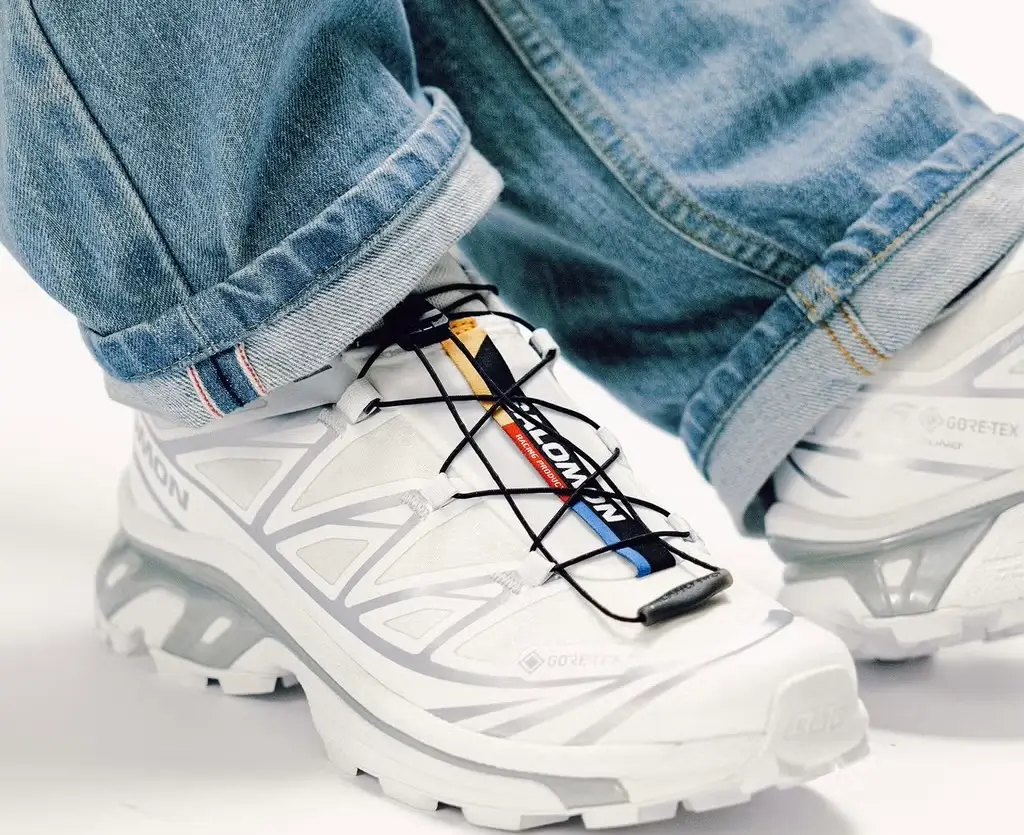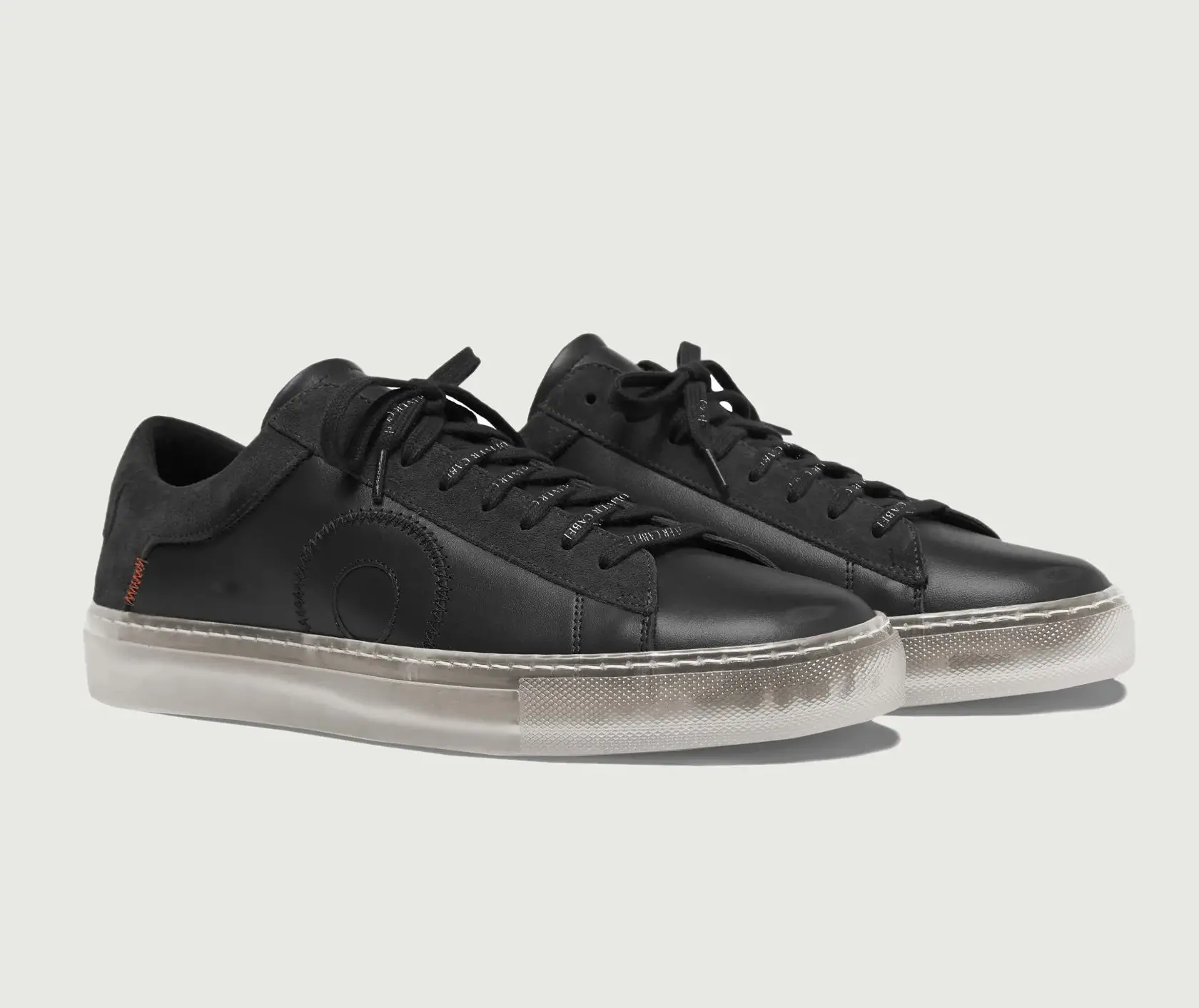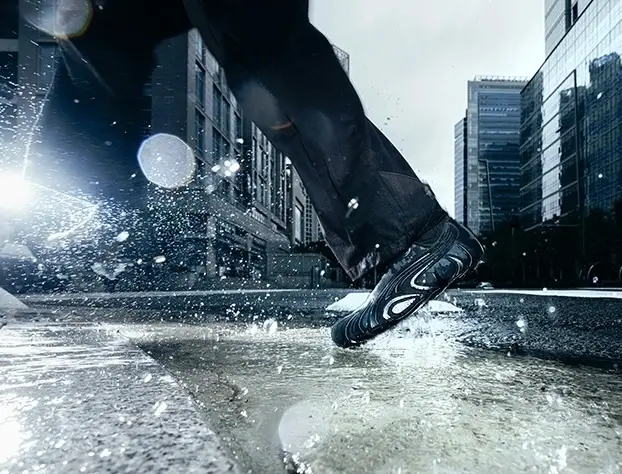Nike is no stranger to blending sport and fashion, constantly experimenting with new silhouettes, materials, and inspirations to push the boundaries of what athletic footwear can represent. The latest iteration of this ongoing exploration is the brand’s ballet-inspired Air Rift, a unique take on one of Nike’s most distinctive models. Known for its split-toe design and association with minimalist, almost barefoot-like performance, the Air Rift has become a cult favorite since its debut in 1996. But with this new release, Nike is redefining the shoe’s identity by merging it with the grace and elegance of ballet, crafting a sneaker that is both functional and artful.
Constructed with removable satin ribbons, the Ballet-Inspired Air Rift represents more than just a clever reinterpretation of a classic—it’s a statement piece that bridges the gap between performance and visual appeal. This blend of athletic and aesthetic values speaks to a broader trend in sneaker culture, where shoes are no longer just about sport but about expressing personal style and tapping into broader cultural narratives.
The Air Rift: A Brief History of Innovation
Before diving into the ballet-inspired version, it’s essential to understand the origins of the Air Rift. Launched in 1996, the Air Rift was Nike’s answer to a growing interest in performance footwear that could enhance natural movement. The sneaker’s design, which features a distinctive split-toe construction and a flexible sole, was inspired by the barefoot running practices of Kenyan athletes. Named after the Great Rift Valley in Kenya, the shoe aimed to offer a near-barefoot running experience while still providing support and cushioning.
The Air Rift quickly became a cult favorite among athletes and enthusiasts of unconventional footwear. Its unique silhouette challenged traditional sneaker design, making it a symbol of Nike’s willingness to push boundaries. Over the years, it has seen various reinterpretations and collaborations, but this latest ballet-inspired version might be the most radical departure yet.
Reimagining the Air Rift
The new Air Rift draws heavily from the world of ballet, a realm defined by grace, strength, and precise movement. The use of removable satin ribbons in this design signals a shift in how the shoe is meant to be perceived and worn. These ribbons, which mimic the look of traditional ballet pointe shoes, can be tied around the ankle and calf in a variety of ways, offering not only aesthetic versatility but also practical functionality.
This choice of material is particularly significant. Satin ribbons are traditionally associated with the ballet world’s ethereal and elegant qualities, offering a visual cue that contrasts sharply with the athletic origins of the Air Rift. The soft, glossy texture of satin ribbons evokes a sense of refinement and sophistication, making the sneaker feel more like a piece of wearable art than a performance shoe.
Moreover, the ribbons are removable, allowing wearers to style the sneaker in multiple ways depending on their preference. This adds an element of customization that is often absent from traditional sneakers. Whether worn wrapped tightly for a more traditional look or left loose and flowing for a casual aesthetic, the ribbons transform the Air Rift into a versatile piece that can shift seamlessly between sport and fashion.
A Balance of Sport and Style
The design of the ballet-inspired Air Rift retains the core elements that define the original model while integrating new features that align with the ballet theme. The split-toe design remains, emphasizing flexibility and natural movement, but the overall structure is softened by the addition of delicate satin overlays and subtle colorways. The choice of soft pastels, muted neutrals, and pearlescent finishes underscores the shoe’s transformation from a purely functional object to a fashion-forward statement.
The construction materials are also noteworthy. Satin, while visually striking, is not typically associated with sportswear due to its delicate nature. By incorporating satin ribbons and overlays into the Air Rift, Nike is making a deliberate statement about the hybridization of function and fashion. The shoe’s body is constructed from lightweight, breathable mesh—an homage to its performance heritage—while the satin elements add a layer of visual complexity and texture.
The satin ribbons serve more than just an ornamental purpose. They provide a secure fit around the ankle and calf, enhancing the stability of the shoe without compromising its aesthetic appeal. This interplay between form and function is crucial to the success of the design, ensuring that the shoe remains wearable and comfortable while also making a bold visual statement.
Ballet and Sneaker Culture Converge
The decision to blend ballet influences with a sport-centric sneaker like the Air Rift is not merely a creative exercise; it’s a cultural statement. Ballet, a traditionally highbrow and elitist art form, has historically been associated with ideals of beauty, discipline, and perfection. By bringing these elements into the realm of sneaker culture—an arena that celebrates self-expression, street style, and athletic prowess—Nike is fostering a dialogue between two seemingly disparate worlds.
This convergence challenges traditional notions of what a sneaker can be. It’s not just about athletic performance or streetwear credibility, but about creating a piece that speaks to the fluidity of modern fashion. The ballet-inspired Air Rift can be seen as a metaphor for breaking boundaries—both physical and cultural. It embraces the femininity and delicacy of ballet without sacrificing the strength and resilience that characterize the Air Rift’s original design ethos.
Moreover, the sneaker taps into a broader trend in fashion that celebrates androgyny and fluidity. The ribbons, typically associated with femininity, are juxtaposed against the athletic form of the sneaker, creating a unisex piece that defies categorization. It’s a design that invites wearers to play with gender norms and redefine their own style narratives, making it both progressive and inclusive.
From Studio to Street
Despite its ballet-inspired aesthetic, the Air Rift remains rooted in functionality. The split-toe design, which allows for greater dexterity and movement, is complemented by a flexible sole that enhances the natural motion of the foot. This makes the sneaker ideal not just for casual wear but also for activities like dance, yoga, or even light training. The ribbons, while visually appealing, also provide additional support, ensuring that the shoe remains stable even during dynamic movements.
This versatility extends beyond the realm of physical activity. The Air Rift’s unique silhouette and elegant detailing make it a perfect candidate for fashion-forward styling. It can be paired with everything from athleisure to high-fashion ensembles, serving as a statement piece that elevates any outfit. Whether worn with leggings and a sweatshirt for a laid-back look or styled with a flowing dress for a more avant-garde approach, the sneaker is designed to adapt to various contexts.
The ballet-inspired Air Rift is more than just a new colorway or material update—it’s a thoughtful reinterpretation of a classic that pushes the boundaries of what a sneaker can represent. By merging the athletic origins of the Air Rift with the grace and elegance of ballet, Nike has created a shoe that is as much about storytelling as it is about performance. It’s a piece that honors both the brand’s heritage of innovation and its willingness to explore new creative territories.
Ultimately, the success of the ballet-inspired Air Rift lies in its ability to be many things at once: a nod to sport, an exploration of fashion, and a cultural statement. It’s a shoe that invites wearers to embrace the unexpected and redefine their own style, making it a compelling addition to Nike’s ever-evolving lineup of boundary-pushing footwear.
No comments yet.








